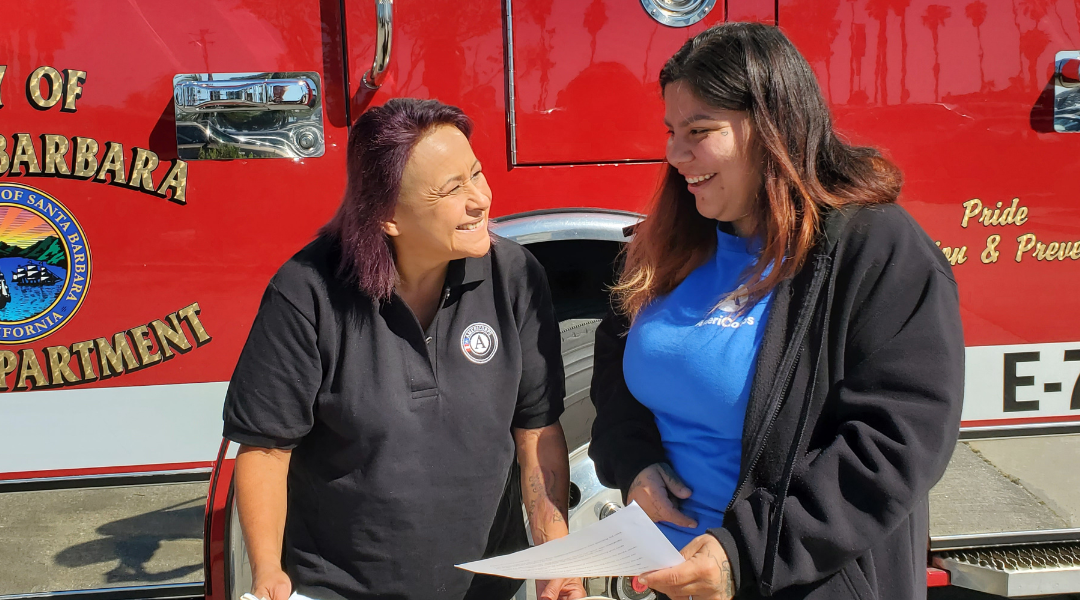
20-year-old Denise Webb (pictured above) is a CoGenerate Senior Fellow. She’s a student at Berry College and a seasoned activist, working with organizations including United Way, Partnership for Southern Equity and The Sunrise Movement. She is the co-author of Why Aren’t We Doing This! Collaborating with Minors in Major Ways.
For the past five years, I’ve been working as an advocate for the causes I believe in and for more intergenerational collaboration. Young people like me want more opportunities to work across generations for change, but we also want to be treated as equals.
To attract us, you have to go from within. My three tips: Understand your biases, break down what you view as normal, and be ready to commit.
1. Understand your biases.
To bring youth toward you, you have to be ready to think long and hard about how you view young people. How old are the people you identify as youth?
Just think:
A 17-year-old comes into your workspace and says that they have been in a youth council for two years researching the effects of *your issue area* and how it impacts *your demographic target.*
The same day, a 38-year-old who has been a part of a community council comes to you and talks about the issues you and your team have also been researching.
Who would you want to join your team? I’d advise choosing the person you could confidently leave with a major task and not ask them about it for two weeks. Who could you walk past and not glance at their computer to see if they are on task? Who would you feel is more equipped for hours of onboarding and mandatory meetings?
“The adult will have more flexibility with their hours.”
“I wouldn’t have to train the adult.”
“I would feel more at ease having an adult doing important tasks with deadlines.”
Are you thinking thoughts like these? If yes, ask yourself why you feel the young person will not be reliable. Is it because of your own kids at home, how young people have interacted with you in the past, news articles, horror stories, even movies? Is there a reason why you believe that bringing a young person on board would require more time and energy than it would to hire someone older?
2. Break down what you view as normal.
Let’s say you understand your biases and now you are conscious of them. Great! Now it’s time to disrupt your normal routine.
Just think:
You and your new, young staff member are trying to come up with times to meet weekly to get some action items assigned and completed.
Uh-oh, your normal working hours of 8am-4pm won’t work for a younger staff member who is in school and needs to meet after 4pm. It used to be convenient for your work schedule and for the school schedule to coincide. But now it’s a hiccup.
You may be thinking:
“I can’t work past 4 pm or 5 pm, I need to cook dinner and pick my kids up from school.”
“I can’t work past that time, what about all of my dinner plans?”
You may ask your young staff member questions like these:
“You can’t work May 25? It’s your graduation?”
“You’re going to be out of the office the last week of April? You have finals?”
Many adults are leery about the amount of progress that can be made when the workday starts at 4 pm. But adjusting your work schedule to the schedule of your young employee allows more young people to feel seen and understood. It also makes for amazing bonding when life happens:
“Hey guys, it’s my turn to cook dinner tonight. I’ll be off camera for a while but I’m still listening!” (This actually happened in a meeting I was in!)
In addition to changing your schedule to be able to meet with your new staffer, it’s also important to ask for their preferred way of communicating, as well as the best time to text/call/email them. You could push youth away by calling during class time, or emailing instead of texting. You’ll get the best results by honoring their communication boundaries and preferred way to stay in touch.
Quick question: Do you think youth missing work to go to their Senior Prom is okay?
3. Be ready to commit.
You understand your biases, you’re okay with adapting your routine, and you feel like you’re ready to actually go out and talk/recruit youth. But are you ready to commit?
If you’re focusing on youth who have relevant lived experiences and are able to provide insight into your issue area, be prepared to dedicate funding for pay, wrap-around services, and much more.
Just think:
You and your young employees are ready to host an in-person panel discussion about the importance of cogenerational collaboration and how it affects oral health research and sheds light on disparities.
One of the youth tells you that they don’t have transportation to the conference. Another says that they just graduated high school and their school-mandated Chromebook (the only computer they had) is now gone; they need a new one to continue to work.
Did you make sure to budget for transportation vouchers?
Are you ready to give them a company computer?
Here are some more things to consider:
What are some systems and practices you will put in place in your organization to ensure that tokenism, manipulation and decoration will not happen to young colleagues?
Are you using fliers, application questions and info session dates that make it tough for young people to attend?
Once you go deep, think about these issues and create some new policies. I predict you’ll get a much better response from young people.





